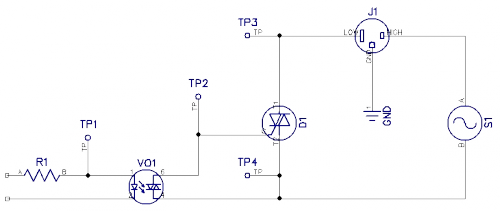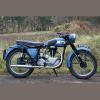-
Posts
129 -
Joined
-
Last visited
Content Type
Profiles
Forums
Events
Everything posted by THX-1138
-
Two more bookcases out, one full-height server cabinet in, and then I'll be able to reach my workbenches again!
-
That's fairly straightforward. However, the pump's fittings can handle 7 L/m at full bore, and have no expectation of getting that kind of flow through the system. However, the lower speed of the pump is 4 L/m, which might go. But I'd rather calculate it out ahead of time -- at least roughly -- than find out empirically. Cooling induction heaters by pumping coolant through the work coil itself is very common. Replacing the coolant or the coil itself is a simple matter, though. I'll tackle that when it becomes needed. No, freezing temperatures are not an issue. I lack knowledge of the proper terminology, and ISTM we're wandering rather far afield from my original basic question. So let me simplify it further. Assume a 60" straight length of hardware-store 0.1875" I.D. copper tubing, parallel to the ground. What PSI would I need to apply at the source to drive a flow of 4 L/m through it?
-

Did this produce chlorine gas by accident?
THX-1138 replied to chrisrocks17's topic in Applied Chemistry
I'd guess you got H₂, O₂, and AlCl₃ + NaCl in solution. -
FeCl₃ does quite well with copper. However, it also will attack steel. And it attacks lighter metals with exothermic vigour. Try a drop on some aluminum foil and watch. It'll start slowly showing bubbles after a few minutes, but shortly as the temperature rises a threshold will be reached and it'll go all gangsta with steam and the liberation of elemental iron.
-
http://en.wikipedia.org/wiki/Golden_spiral The golden ratio seems sort of 'magical'; it shows up in natural processes all over the place. I just wondered if perhaps using it here would result in improved/optimum performance.
-
For the first pass, let's ignore the heat-exchanger aspect of the application. I got here because I was looking at pumps, and noticed that one I rather liked in all other respects had fittings larger (6mm) than the I.D. of my proposed tubing (3mm). The pump was rated 4-7 litres/minute, so I wondered whether the tubing could support that volume of flow. Then I tried to find out, ran into my own wall of ignorance, and generalised the question a bit to ask it here. Thanks!
-
I plan to make a small induction heater using copper tubing for the work coil, and run water through the tubing for cooling purposes. Assuming water as the coolant fluid, an inside diameter of [math]d[/math], a maximum height differential of [math]h[/math]" (going through a cooling block), and a total tubing length of [math]l[/math], how can I calculate the maximum volume of water and the necessary PSI of the pump? There'll either be a sharp 180⁰ bend where the tubing doubles back, or else the 180⁰ turnaround will be made more gently by transitioning to a nonconductive pipe -- depends upon how much of an impact the sharp bend would have on the maximum flow. I assume there'll be different answers depending upon whether it's an open system (the return dumps elsewhere than the intake) or a closed one (integrated tank/pump unit). I never did any work with fluid engineering, so this is totally out of my area. Thanks!
-
I don't think it's graphite; it doesn't have the right cleavage. In fact, it doesn't appear to have any cleavage; I think it's truly amorphous carbon. I just didn't know whether amorphous carbon was suitable for crucibles; I've only seen graphite ones.
-
I want to melt a very small quantity of gold so I'm looking to make a.. well, call it a microcrucible. I want to avoid metal because I don't want the gold to bind to it. I have a graphite crucible, but it's much too large. I have some high-purity 0.5" carbon rod, and I'm wondering how it could be made to work. Say, if I take a one-inch length and make a well in it. So, my questions: How would the straight carbon react to open flame? Is there a way to graphitise carbon rod at home? Maybe I could use it to make a tiny induction furnace? Anyone have any (constructive <grin>) comments or suggestions? Thanks!
-
I'd be quite surprised, given the temperatures involved. I'd guess the crucible never exceeded 800⁰C. I've melted bismuth in it before with no problems.
-
This is actually two questions: I have a nickel crucible in which some bismuth was melted, plus other contaminants. (Specifically, as part of a traditional Marshmallow Peep torture party, a peep was eviscerated, filled with molten bismuth, and the remains put back in the crucible. Fun.) The question is, what's the best way to clean out the detritus (bismuth oxide, random schmutz) and restore the crucible to near-pristine state? To what reagents is it particularly resistant but that might tackle the dregs? On the other end of the spectrum, I'm trying to remove the metal jacket from some large dry cells. (I'm trying to reclaim the encircling carbon relative intact.) They're magnetic, but I don't think they're steel -- FeCl3 seems to scarcely touch it -- so I'm suspecting they might be nickel. To what reagents is nickel particularly susceptible? Thanks!
-
This is what I've gotten so far. Assuming it'll work, I've gotten all the parts figured out except the transformer. R2 is sized for a 1:1 winding giving about 5VAC at 20mA across T1's secondary. I haven't been able to locate an appropriate part for T1 yet. Any comments or suggestions welcome..! Thanks!
-
I'm designing a circuit to switch a 120VAC socket with a triac driven by a low DC voltage signal through a MOC3020 opto-isolated diac. I want to be able to sense a fault, defined as [math]FLT = \left(TP1\land\left(\left(\phi TP2\neq\phi TP4\right)\lor\left(\phi TP3\neq\phi TP4\right)\right)\right)\lor\left(\overline{TP1}\land\left(\left(\phi TP2 =\phi TP4\right)\lor\left(\phi TP3 = \phi TP4\right)\right)\right)[/math] I know I'm probably using the wrong symbols, but the meaning is: There's a fault if, whether there's anything plugged into J1 or not, TP1 is high and there's no signal through V01 or D1, or TP1 is low and there is a signal through the diac or triac BTW, how does one signify 'no signal' or 'phase difference'? (Since the voltage would always be zero, it'd have no phase, and hence would have a different phase than TP4, correct?) Thanks!
-
I haven't posted a lot, but I noticed recently that somewhere along the line my profile page says Group: Senior Members. Where did that come from? What's a 'senior member, what the flying moose ears did I do to become one, and what other groups are there on SFN and what do they mean? Thanks..
-
Looking at the diagram and description, I must not understand how it works. Unless the 'magnet plate' is an active rather than a passive element, I would expect all sorts of issues with eddies and other induction effects in the plate. And I'm not seeing the fields being used for repulsion, which is what I associate with the term 'mag lev,' but with attraction for stabilisation. I'm seeing not a magnetic bearing, but magnets used to reduce wear on a more conventional bearing. Or am I all wet?
-
Hmm. If the sleeve is Teflon™ or some low-friction high-temperature plastic, and it's supported by being sunk press-fit into the gimbal frame, this might work really well.
-
Absolutely! Are you saying that one style of bearing is better than the other for that? How about a Wingqvist bearing? Thanks!
-
That (inner race against shoulder on the spindle) is my current plan for axial support. (See my diagram for the Graphalloy solution.) I can't lay my hands on the rotor at the moment, but here's a drawing I made of it; also attached to this reply. (Careful examination might reveal that it is, in fact, itself the outer race of a Fafnir ball bearing that never made it to the assembly stage. ) From the drawing it should be possible to calculate the part's volume and hence its approximate mass, but I lack the geometry skills to do that. Although I might try modeling it in SketchUp and seeing if that can tell me the volume. A tapered roller bearing would probably suffice for the radial and axial loads -- but I don't think it would be too happy doing so at 20_000 RPM. Thanks! BearingRaceGyroscope.pdf
-
Well, the Graphalloy folks finally got back to me. They do sell small quantities retail -- at US$100 apiece. That's too dear for me, so I'm checking the other suggestions. (Single-threading due to mental resources.) Personally, I've always been rather fond of Fafnir. I frequently see bearing dimensions specified as 'NNmm × NNmm × NNmm,' but I haven't been able to figure out which dimensions those numbers specify. I'm guessing ID, OD, and width (thickness/bore depth), but that's just a guess -- and I don't know in which order they'd be listed, anyway. For a bearing supporting axial loads, somewhere in there I'd expect the diameter of the load-bearing inner-race flange. This is probably in Machinery's Handbook somewhere, but my copy is at home and buried. :-/
-
The application is a fairly massive gyroscope (I'm guessing the rotor is about 1kg) spinning at whatever RPM I can safely manage. The bearings are to mount the spindle in the inner gimbal, so they need to be able to support the axial thrust and provide low-friction support of the spindle rotation. And be strong enough to support the precession forces if the gimbal is locked and an attitude change is attempted. The Graphalloy stuff looks like it would work very well: provided the flange can support the axial load and act as a keeper. Unfortunately, I haven't heard back from the Graphalloy people..
-
One of the projects on my back burner array is making a gyroscope out of an old 6" ball bearing race. One of the things I need to figure out is how to mount the spindle in the frame. Given the mass of the thing, the mounting needs to be robust in order to resist the effects of precession. My first thought was to use a needle bearing: but that would require a seriously hardened spindle tip and equally wear-resistant fitting. And precession thrusts would probably do neither much good. Next I considered a simple ball-bearing: and that's the best I've been able to come up with. Shoulder bearings such as used in 'jewel' watches would require the fitting to be adamantine and refractory. and there'd need to be at least a tiny bit of play. One's hard to come by, and the other's not something I want in a fairly massive device spinning at thousands of RPM. Any thoughts or suggestions on a solution suitable to construction in a home shop? Thanks!
-
How would the gravitational influence of the [relatively] nearby passage of a stellar mass affect our system? As a system, rather than as individual components (I imagine the direct effect on Sol would be moderately significant ). Would the system possibly precess under the right circumstances? Thanks!
-
Concerning a Ranque-Hilsch vortex tube, I'm wondering about the effect of the curve of the spiral vortex chamber on the device's performance. Specifically, I'm wondering if there would be any particular effect if the curve were a golden spiral rather than just any old spiral. I haven't found any references online, so I'm tossing it into this remarkable collection of creative minds to see if anyone has any thoughts. What do you think? Thanks!
-
Coming back to this again.. It looks as though it would be safer to use xylene (dimethylbenzene) than toluene; xylene's boiling and flash points are considerably higher. The only information I've found concerning sulphur's solubility indicates both work equally well.



